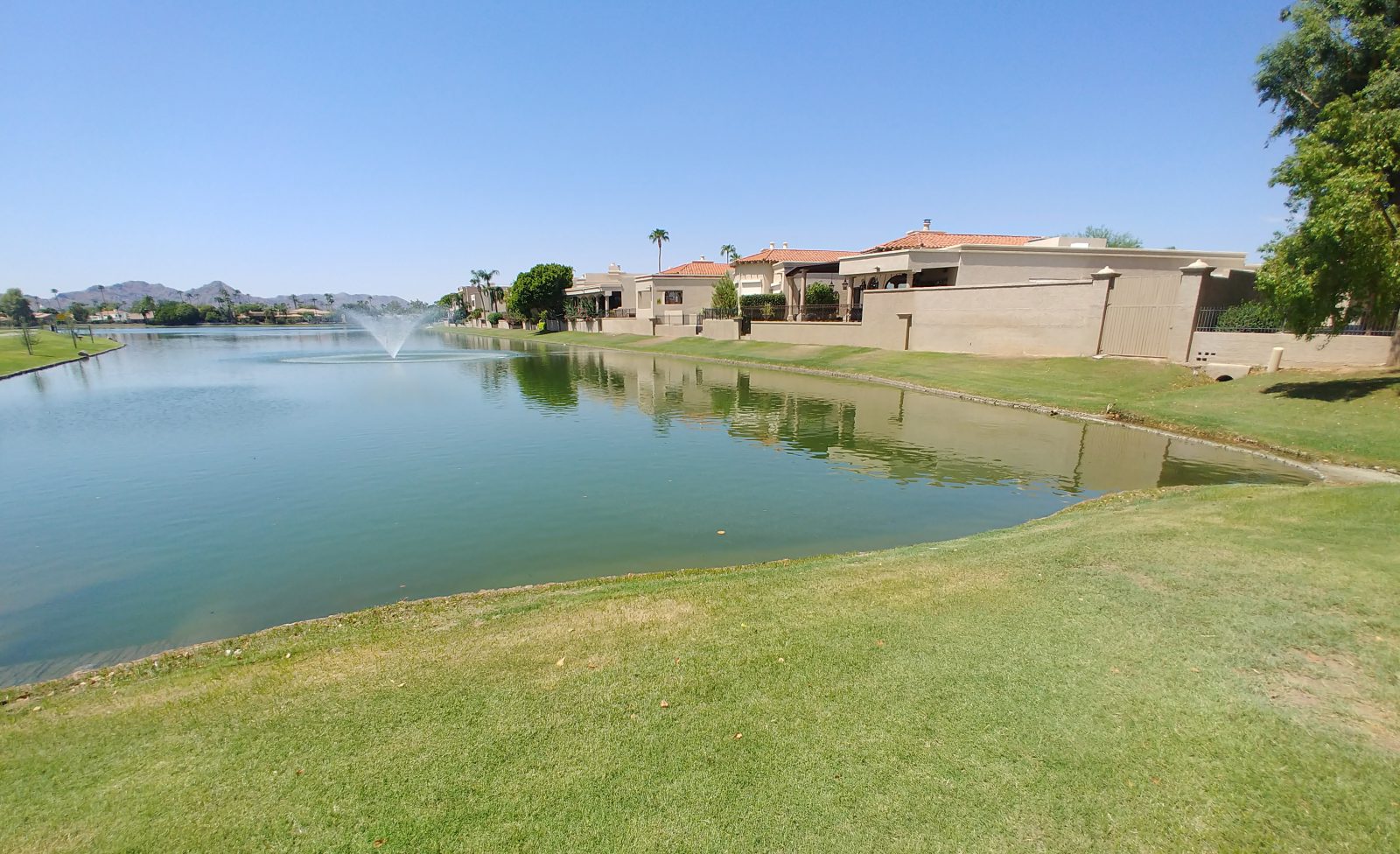

Managing a Rare Algae Species By Improving Water Quality
This property is a community located in the greater Scottsdale, AZ area. The community lies within the Indian Bend Wash, an oasis of parks, waterbodies, paths and golf courses traversing 11 miles through the heart of Scottsdale. As a master planned community, it boasts and demands a premium level of quality in every facet of community life, including the 10 lakes and ponds that are encompassed by the property.
In recent years, a three-lake system on the property had been plagued by a rare form of algae called Botryococcus braunii. These particular algae out-compete other algae species by altering surrounding bacteria to benefit itself while using available phosphorus to replicate in high numbers. The result of the bloom is an oil-like slick on the surface of the water that is caused by the high amounts of hydrocarbons that the algae produces. This can be quite disturbing and foul smelling to local residents. Blooms such as these can also be detrimental to surrounding fish populations and other aquatic species.
After a consultation with community members, SOLitude selected nutrient remediation for this lake’s management program. This phosphorus-locking technology helps create water quality conditions that are less hospitable to nuisance algae and aquatic weeds, including Botryococcus braunii.
Rare Algae Species Management
- Before & After


Study Results
Before applying the technology, a precise water quality analysis was conducted and analyzed by lake management scientists. Dissolved oxygen levels were deemed suitable for aquatic life and overall ecosystem health. This may be attributed to large aeration systems throughout each lake. Aeration in this water system consists of mainly vertical bottom aeration located in all sections of the system, accompanied by six fountains providing minimal horizontal surface aeration and water movement.
However, the analysis revealed that the 30-acre system was hypertrophic (having a large amount of phosphorus). Natural levels of phosphorus in fresh water typically range from 5µg/L – 50µg/L, but this waterbody had 122.7µg/L (micrograms per liter) in the system. Another parameter that tested fairly high was chlorophyll-a, at 20.4µg/L. Botryococcus braunii examined in the picture were not present in the chlorophyll-a count since the carotenoids were mainly being expressed (note the orange color).
It was theorized that if the phosphorus/nitrogen ratio could be reduced to more balanced levels of 32:1, the bloom would not resurface as it had in the years past. A treatment to remediate some of the nutrients using phosphorus-locking technology was performed in late January 2020. This was completed by means of a watercraft and Phoslock, a slurry mixture of bentonite clay and lanthanum. Each section of the lake was thoroughly covered to ensure even distribution of prescription. Non-toxic lake dye was added to the slurry to visually observe output of slurry in the lakes and ensure proper lake coverage. Data was collected before treatment (11/26/19), two weeks after (2/12/20), and two months after treatment (4/23/20).

The results showed a dramatic impact on multiple water quality parameters in the system. We have noted a significant improvement in the reduction of free reactive and total phosphorus available for algae uptake after the treatment. Free reactive phosphorus was reduced from 36µg/l to 9µg/L and total phosphorus from 122.7µg/L to 37.6µg/L – a reduction of 75% and 69.4%, respectively. Likewise, we noted an increase in dissolved oxygen, a decrease in the turbidity of the system, and an unforeseen but significant decrease in alkalinity.
We continue to monitor the progress being made in this particular system and have not yet had any recurrences of Botryococcus braunii or other algae blooms. This project underscores the importance of using an integrative approach that includes algaecide treatments, monitoring, and the occasional correction with phosphorus locking technology for the effective management of nutrient-rich waterbodies.
SOLitude Lake Management is an environmental firm committed to providing full-service solutions that improve water quality, preserve natural resources, and reduce our environmental footprint. Our services include lake, pond, wetland and fisheries management programs, algae and aquatic weed control, mechanical harvesting, hydro-raking, installation and maintenance of fountains and aeration systems, water quality testing and restoration, bathymetry, lake vegetation studies, biological assessments, habitat assessments, invasive species management and nuisance wildlife management. Services, consulting and aquatic products are available to clients nationwide, including homeowners associations, multi-family and apartment communities, golf courses, commercial developments, ranches, private landowners, reservoirs, recreational and public lakes, municipalities, parks, and state and federal agencies. Learn more about SOLitude Lake Management and purchase products at www.solitudelakemanagement.com









